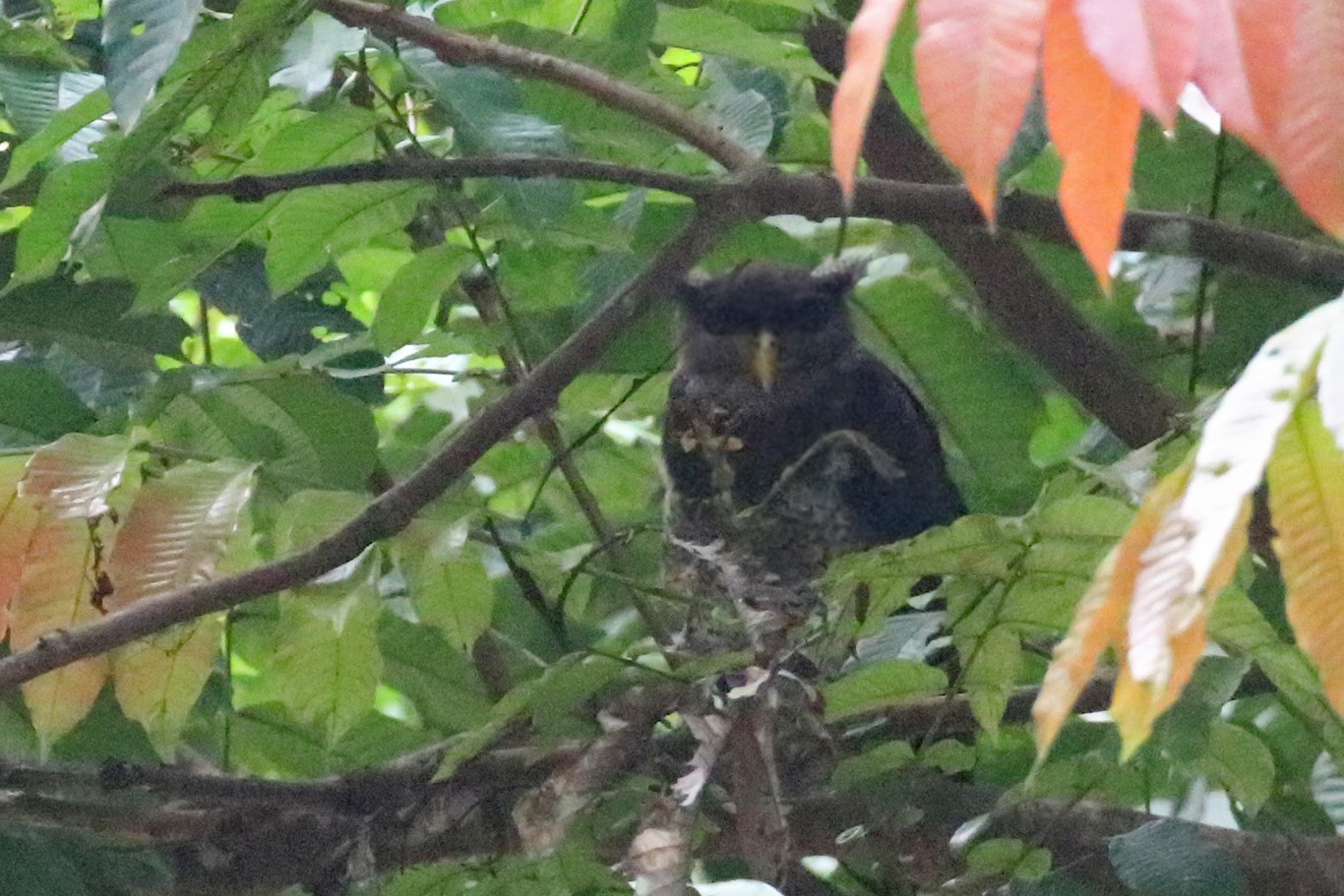Barred Eagle-owl
A species of Horned Owls Scientific name : Bubo sumatranus Genus : Horned Owls
Barred Eagle-owl, A species of Horned Owls
Botanical name: Bubo sumatranus
Genus: Horned Owls
Content
Description General Info
 Photo By Charley Hesse TROPICAL BIRDING
Photo By Charley Hesse TROPICAL BIRDING Description
The barred eagle-owl is a fairly large owl but relatively small eagle-owl, this species ranges from 40 to 48 cm (16 to 19 in) in length. There is almost no size sexual dimorphism in this species (although some females are marginally larger than the males) and adjacent island subspecies vary dramatically in size, both unusual attributes for eagle-owls. It is most distinctive due to its barred underparts, large but sideways-slanting ear tufts, a white bar running from the eyebrows through the front of the eart tufts and much more heavily marked breast than belly. The face and lores are a dirty grayish white colour. The eyes are usually a dark brown colour, but occasions where this species has had yellow eyes have been reported. The bill and cere are pale yellow, with an occasional greenish tinge to the cere. The upperparts are grey-brown, crossed and mottled with several zigzag bars of rufous-tawny colour, being broadest on the back. The upper-tail is dark brown with about six whitish or tawny bars. The tarsi are feathered to the toe joint. The juvenile barred eagle-owl are pure white in their natal down. Whitish mesoptile stage, in transition to adult plumage, is still a dirty white but is banded with brown on the wings and tail and the ear tufts are much shorter than on mature birds. 
Size
46 cm
Nest Placement
Tree
Feeding Habits
Barred Eagle-owl sustains on a diverse diet including large insects, birds, rodents, and reptiles. With robust talons suited for various prey, barred Eagle-owl adapts to opportunism, even consuming similar-sized predators. Barred Eagle-owl's non-selectivity extends to captive diets of fish, bird, and mammal meat.
Dite type
Carnivorous
General Info
Feeding Habits
Bird food type
Distribution Area
It is found in Brunei, Cocos (Keeling) Islands, Indonesia, Malaysia, Myanmar, Singapore, and Thailand. Its natural habitat is subtropical or tropical moist lowland forests. It typically is a resident of evergreen forests with pools or streams, but also ranges into large gardens with tall, densely foliated trees, such as the Bogor Botanical Gardens found in West Java as well as wooded groves in cultivated country, both sometimes not far from human habitations. It usually ranges in elevation from sea-level to roughly 1,000 m (3,300 ft) but can range up to about 1,600 m (5,200 ft) or more at locations like Mount Gede in West Java and Mount Singgalang in West Sumatra. 

 Photo By Charley Hesse TROPICAL BIRDING
Photo By Charley Hesse TROPICAL BIRDING